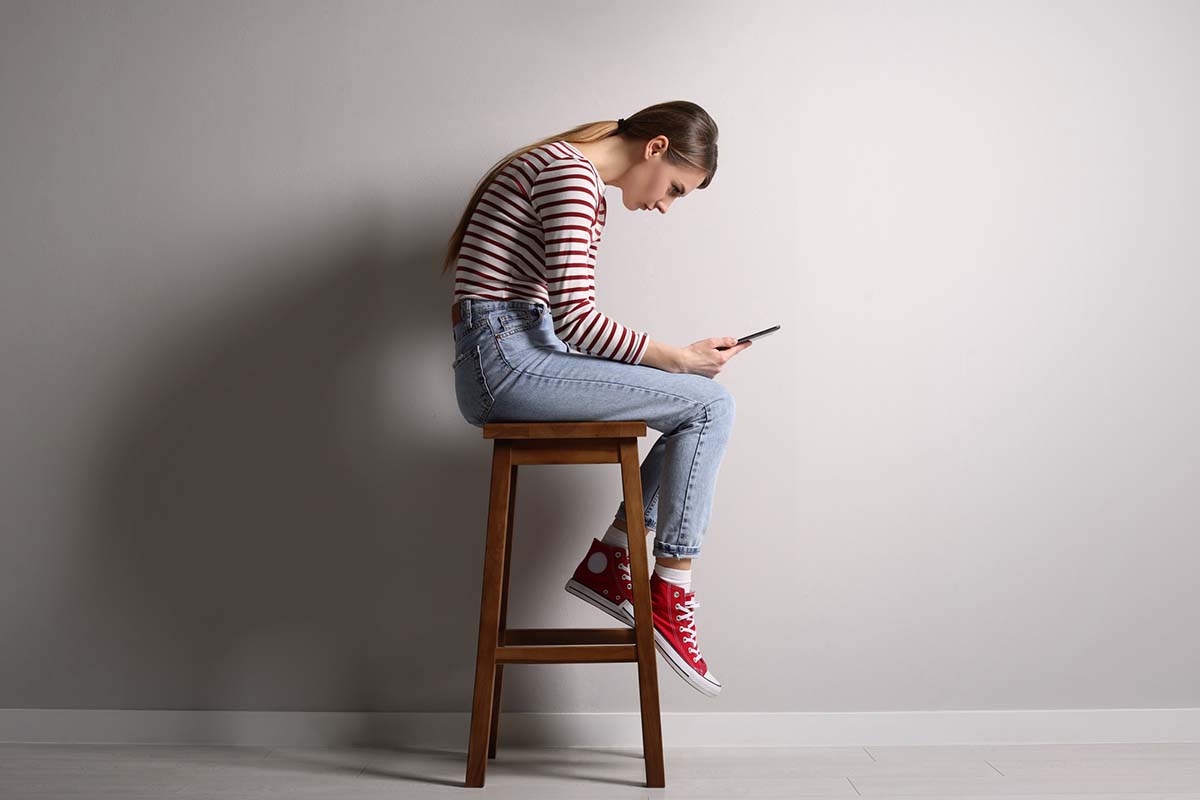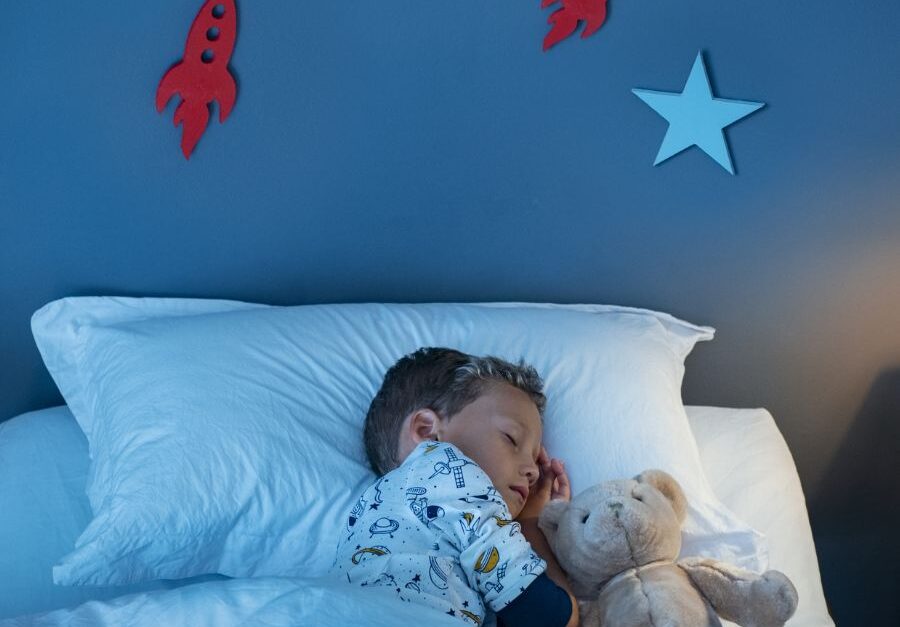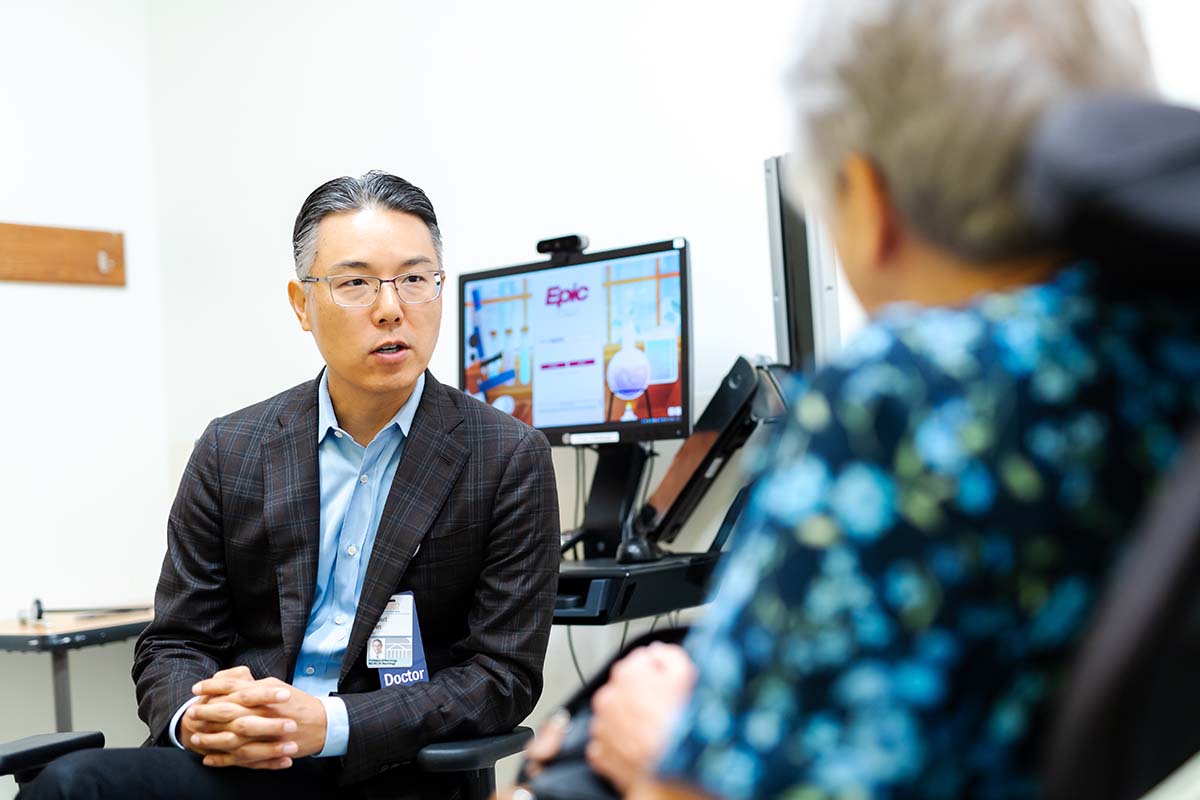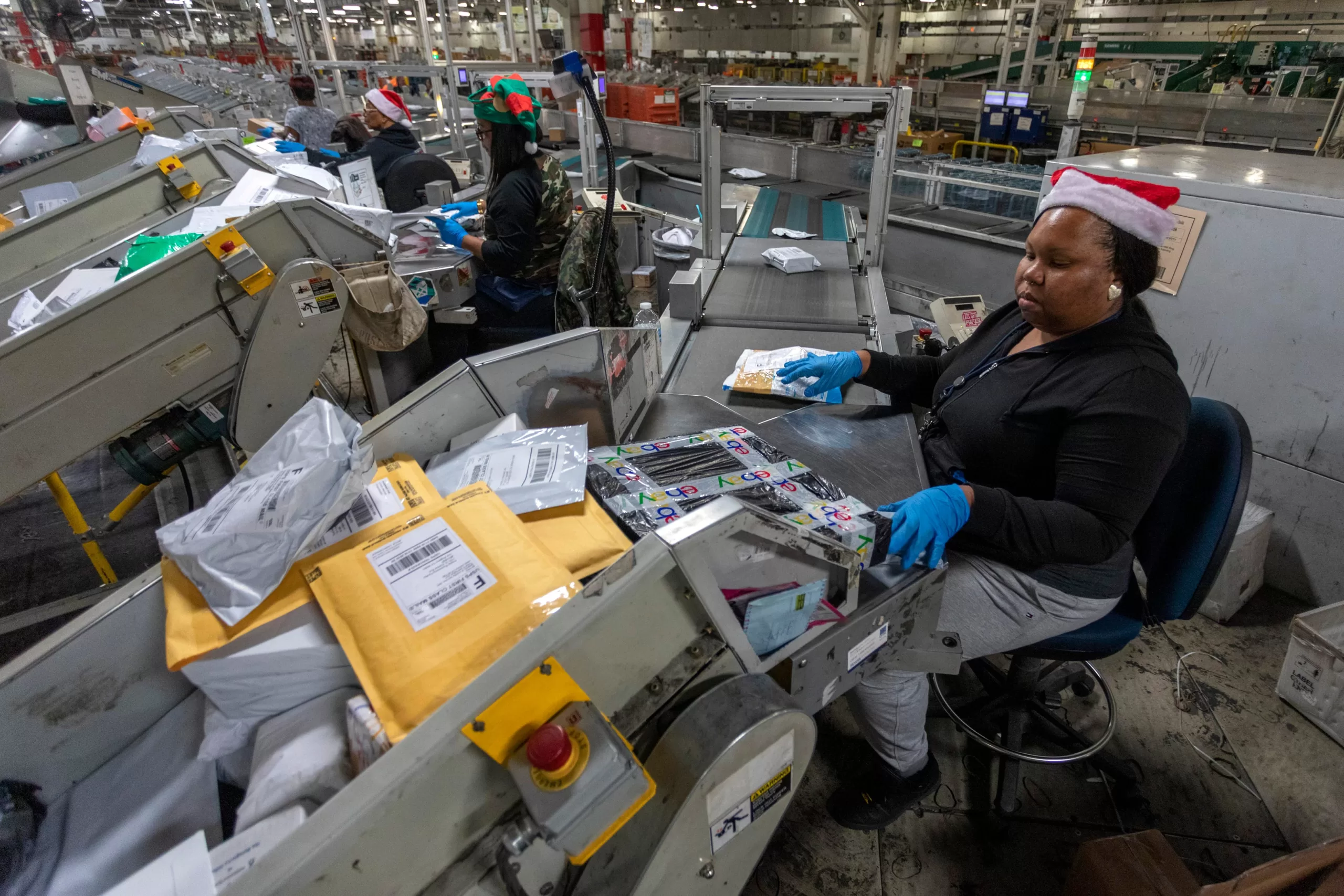Scoliosis is one of the most well-known spinal conditions. In the U.S., over 100,000 kids are diagnosed every year. So what causes scoliosis in children? And are there ways to keep your kids from developing it?
To find the answers, we talked to Keith Bachmann, MD, a pediatric spine expert at UVA Health Children’s. He shares his insights and busts 3 common myths about what causes scoliosis.
We Don’t Often Know What Causes Scoliosis
Scoliosis most often affects kids between the ages of 8-12. Some grow out of it. But children with a more severe case often need treatment.
“Most of the time, we don’t know what causes scoliosis,” Bachmann says. When scoliosis has no clear cause, it’s labeled as “idiopathic.” And idiopathic scoliosis accounts for 80% of all cases.
That means for 4 out of 5 scoliosis patients, we’ll never know what caused their spine to curve.
For families, that frustration has led to a lot of myths about the origins of scoliosis.
What Doesn’t Cause Scoliosis? Busting Myths About Spine Curves
Because no one knows what causes idiopathic scoliosis, it’s not surprising that a lot of myths exist. Most of the myths try to pinpoint a cause that could have been controlled. Here are a few things we’ve discovered that don’t cause scoliosis.
Myth #1: Wearing a Heavy Backpack
By the time you get your kid’s textbooks, band instrument, sports uniform, lunch, and favorite recess toys into a single bag, it’s surprisingly heavy. And then they play with the straps, lowering it down or hanging it off one shoulder. Seems like that might mess up a kid’s back and cause scoliosis, right?
These claims aren’t totally groundless. Heavy backpacks can cause back pain, especially when worn incorrectly. For comfort, try to keep your child’s backpack at a reasonable weight limit and help them position it correctly. But this only prevents general back pain.
A heavy backpack can’t cause scoliosis.
On the other hand, if your child already has scoliosis and back pain, a heavy backpack can make it more painful. Let your child’s school know about their scoliosis so accommodations can be made. This can include things like 2 sets of books, one for at home and another for at school.
Myth #2: Bad Posture
Kids, and especially teenagers, tend to sit in a number of ways that would make older people hurt for days. But spines are strong. It would take much more than just bad posture to cause their spines to curve the wrong way.
On the other hand, many kids with scoliosis deal with their spine pain by sitting in a way that’s comfortable to them. Which often looks like bad posture.
Worried About Your Child’s Back?
Early diagnosis and treatment can make scoliosis much more manageable.
Myth #3: Playing Sports
Many famous golfers, swimmers, and gymnasts have scoliosis. So, it’s easy to see how sports and scoliosis could be tied together. But playing sports won’t increase your child’s chances of getting scoliosis. In fact, it may increase the chances of spotting scoliosis if they have it.
“Sports physicals are an opportunity to screen for spinal deformity,” Bachmann says.
Other athletes might start up a sport because it gives them relief from some scoliosis pain. Natalie Coughlin, a swimmer and Olympic gold medalist, said swimming helped her manage her scoliosis. Usain Bolt, possibly the fastest Olympic runner in history, also deals with scoliosis. But he felt that developing strong core muscles, which also helped him win medals, made the symptoms more manageable.
What Causes Scoliosis in Children?
So, what can increase your child’s risk of developing scoliosis? Here are a few of the things we know can increase your risk.
Being a Girl
Boys and girls get scoliosis at roughly the same rates. But being a girl means your scoliosis is more likely to progress, leading to more severe curves.
Family History & Genetics
“A parent with scoliosis is the most common risk factor for children,” Bachmann says. While the exact gene or genes responsible for scoliosis is unknown, it does seem to have a strong genetic link.
Fortunately, parents who’ve experienced scoliosis also tend to be the sharpest-eyed. This often leads to early diagnosis and treatment.
Being Tall
Tallness is associated with having a longer spine, which gives it more space to go sideways. If your child is tall, you’ll want to keep a close eye on them. This seems to be especially true if they’re also on the thinner side.
Other Medical Conditions
If your child has a medical condition that affects their muscles, bones, or genes, then they’re at higher risk for scoliosis. This form of scoliosis is called “syndromic scoliosis.” The biggest type of syndromic scoliosis is called “neuromuscular scoliosis.”
These include:
Connective tissue disorders like:
- Marfan syndrome
- Ehlers-Danlos syndrome
- Osteogenesis imperfecta
Neuromuscular scoliosis occurs with conditions like:
Genetic disorders like:
- Trisomy 21 (Down syndrome)
- 22q11.2 deletion syndrome (DiGeorge syndrome)
- Prader-Willi syndrome
Pregnancy Complications
Everything that happens in a pregnancy risks affecting the babies. But being born with scoliosis is very rare. Congenital scoliosis (scoliosis you’re born with) accounts for less than 1% of cases. Of that very small group, around 20% were born following complicated pregnancies. That includes twins or babies born to moms with insulin-dependent diabetes.
So, Can Scoliosis Be Prevented in Children?
No. For many, this is a huge relief. If you or your child have scoliosis, it’s not because you did anything wrong. There’s nothing you should have done differently.
All you can do is talk to your doctor at the first sign of a problem. Early detection does lead to more successful medical care. Your pediatrician will screen for scoliosis at your child’s checkups. But you can also ask for an orthopedic referral if you have concerns that you want a spinal care expert to address.
While scoliosis can’t be prevented, severe scoliosis can be avoided through early treatment. Bachmann says that bracing, physical therapy, and even surgery are all useful tools for treating scoliosis.




















